2535 people reached on Lassi with Lavina FB page – 407 engagements – Facebook Insights
755 Views on LinkedIn -10 Likes
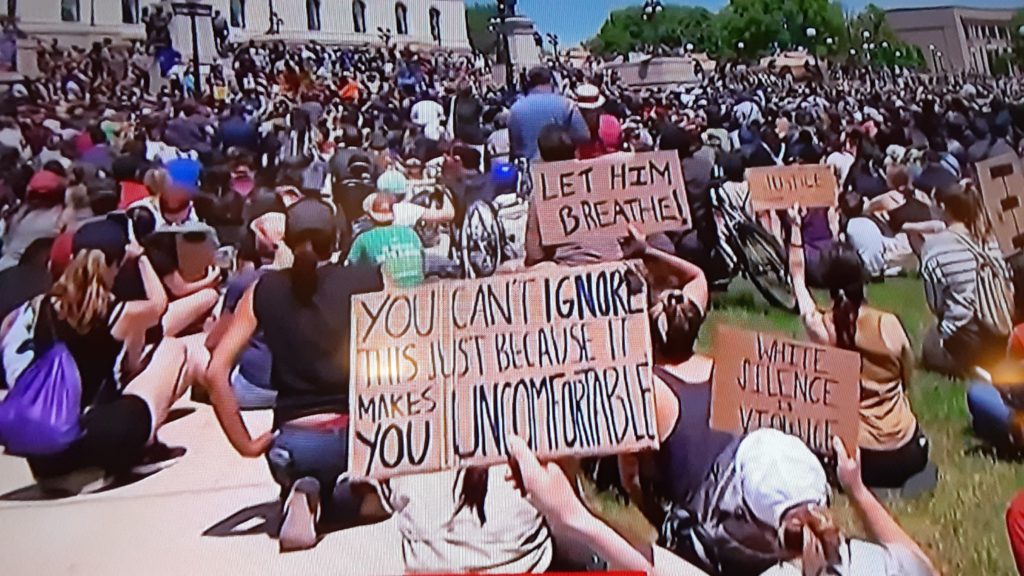
America Can’t Breathe
A Modern Day Lynching Triggers a Reform Movement
[dropcap]I[/dropcap]t’s been called a pandemic within a pandemic. America has been hit by a double whammy – the coronavirus which has claimed over 110,000 lives and another virus which has infected it for over 400 years – and that is the virus of racism.
Racism in America goes back to the original sin of slavery and now in 2020 it has been perpetuated by the knee of a white police officer pressed against the neck of a fallen unarmed, hand-cuffed black man. The knee stayed on the victim’s neck, while three other officers watched, for 8 minutes and 46 seconds – until the life oozed out of George Floyd, whose last words were, “I can’t breathe.”
Racism isn’t new – the only difference now is that it is getting documented. This modern day lynching was recorded by bystanders on their cell phone cameras – and the result was a horrific video which has acted like a powder keg, shocking people of all colors and faiths in its sheer brutality.
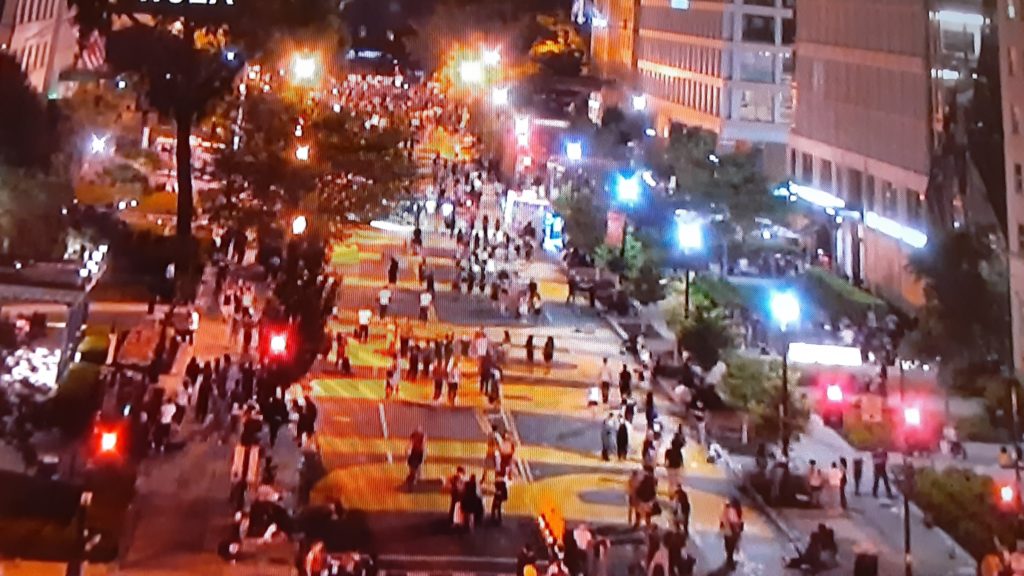
[dropcap]G[/dropcap]eorge Floyd’s last words were “I can’t breathe” and these have become the anthem of millions of protesters. America can’t breathe and for the past 13 days people –black, brown and white – have come together to protest against police brutality. The protests have spilled over to a 100 cities in all 50 states, even in the midst of a COVID-19 crisis. What has been noteworthy is the turnout across racial, gender and age barriers, and the support has ignited in many countries across the world from Germany to the UK to Japan. In Canada, Prime Minister Justin Trudeau took a knee in solidarity with the protesters.
The Obamas who are greatly loved by many in the US, were part of the commemoration for all graduating students in America in a virtual celebration and they both spoke out about racism and action. Barack Obama said, “As has always been true at key moments in history, it’s going to depend on young people to go out there and rewrite what is possible.”
As Michelle pointed out, “It’s up to all of us—Black, white, everyone—no matter how well-meaning we think we might be, to do the honest, uncomfortable work of rooting it out. It starts with self-examination and listening to those whose lives are different from our own.”
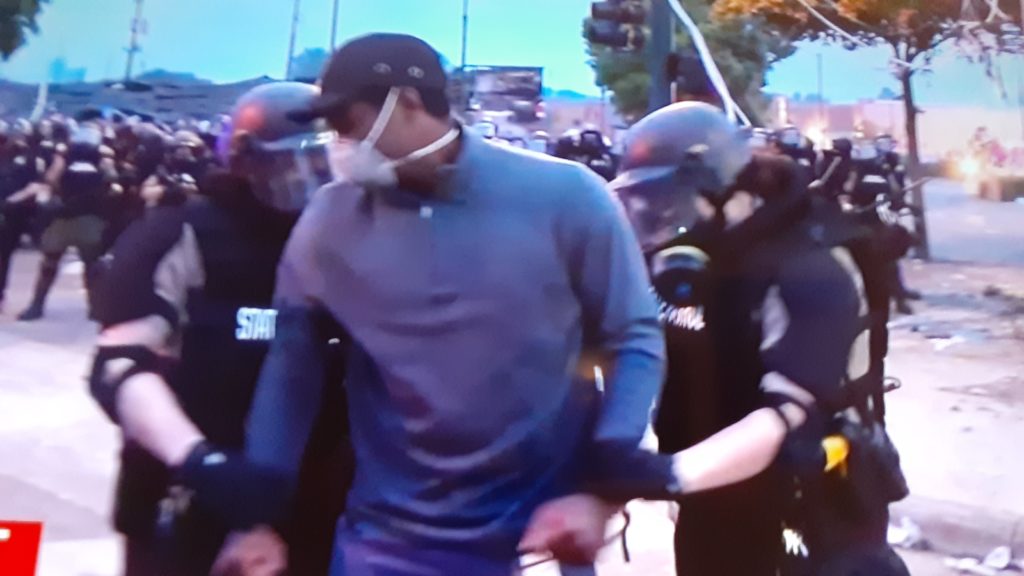
[dropcap]S[/dropcap]o where do the Indian-Americans fit into this larger picture?
They themselves, along with other South Asians, have been objects of racism, starting with discrimination against ‘Hindoos’ a hundred years back to the immigration biases of the 60’s to the Dotbuster incidents in 1980’s to many other hate crimes till the present day. But all this fades in comparison to the systemic racism against the blacks for centuries, including slavery, lynching and racial profiling. The country has failed them in social and economic equality and criminal justice.
Vanita Gupta, President and CEO of The Leadership Conference, is the former head of the US Department of Justice’s Civil Rights Division in the Obama Administration. Speaking at a virtual town hall organized by Indiaspora with other Indian-American activists, she said, “Mr. Floyd’s death really reopened wounds that expose the degree to which there are two justice systems, two kinds of sets of communities in this country. The history of police brutality against black people in particular, is a long and storied one.”
She feels that this confluence of events is a turning point for the nation and there’s a feeling that one can’t go back to normal and people are demanding more of their elected officials.
Gupta’s Leadership Conference works on civil and human rights in coalition with over 220 organizations and they have asked members of Congress for eight specific changes to address police violence. Over 440 organizations have signed on to the platform and are working with Congress on a comprehensive bill to ban chokehold and create a national registry of police misconduct, among other changes.
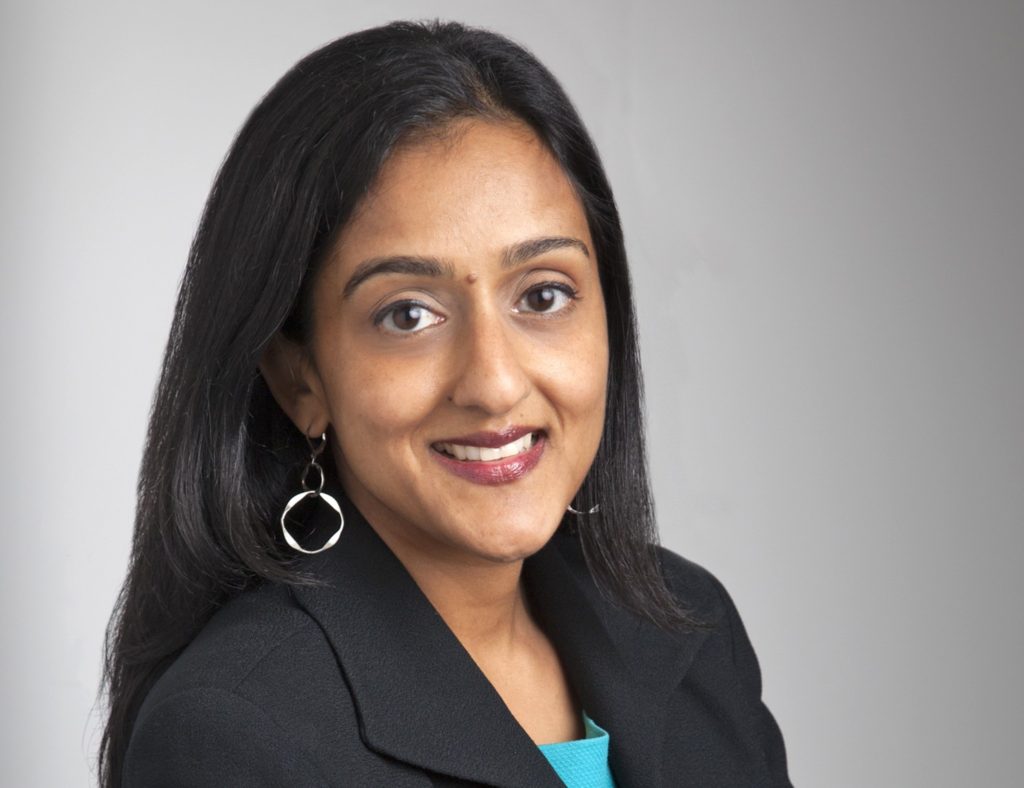
[dropcap]I[/dropcap]ndian-Americans like Senator Kamala Harris and Rep. Ro Khanna are leading the charge in getting critical legislation passed in Congress. There are several Indian-Americans who lead nonprofit organizations and these are coming together to address issues of racism against blacks in a pro-active way.
Some young Indian-Americans have individual reasons for marching in the protests. For Gurpreet Kaur, a professor in health sciences at California State University in Torrance, California, it brought up terrible childhood memories of 1984 in India when Sikhs were persecuted. She says: “Being a Sikh, I feel it is my moral obligation to stand up against systemic racism, abuse of power and the extrajudicial killing of civilians. As Martin Luther King Jr. said, “In the end, we will remember not the words of our enemies but the silence of our friends.”
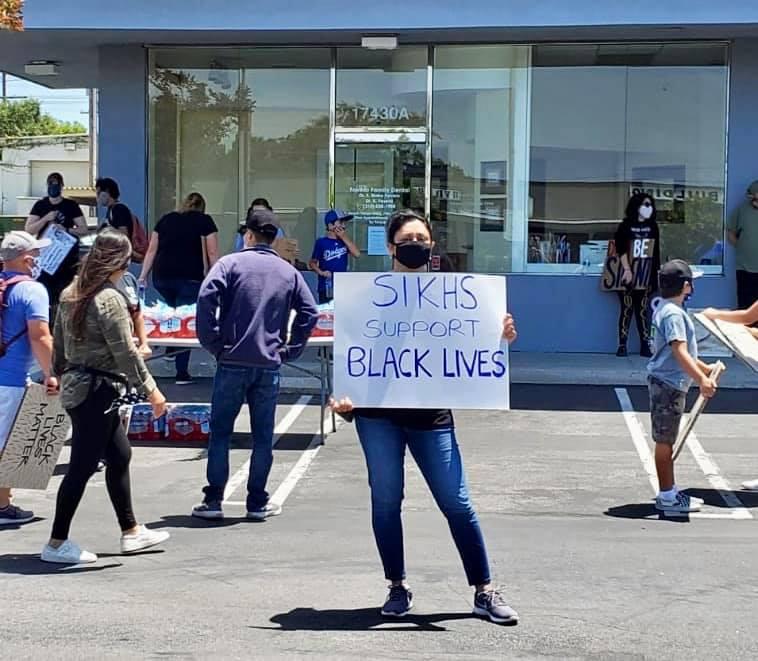
[dropcap]M[/dropcap]any Indian-Americans who are a part of the fabric of America feel strongly about racism against blacks and are trying to be a part of the solution. Rajeev Sigamoney, Chair of Film at Pacific Union College in Napa, CA., says: “We were not brought over to this country unwillingly and subjugated to lifetimes of slavery and systemic oppression. The difference this makes psychologically and to our starting points is immense. Just because you arrived with $50 in your pocket, doesn’t mean you still didn’t arrive with plenty of privilege.”
As he points out, “We can never fully understand their struggle and life experience. We can listen, we can advocate and we can love our black friends.” He and his wife Brittnee, who is white, marched in the protests and have contributed to black organizations as they share ways on how Indian-Americans can engage with the black community in solidarity. Parents of a mixed race child, they realize that the conversations have to start in childhood.
The race dialogue has continued on social media amongst Indian-Americans: Instagram went dark for a day with posts of black tiles in solidarity; Indians on social media have posted and spoken about the inequities, and arranged virtual panels and gatherings. But sometimes it takes more than words – actual deeds and that is where Rahul Dubey comes in.
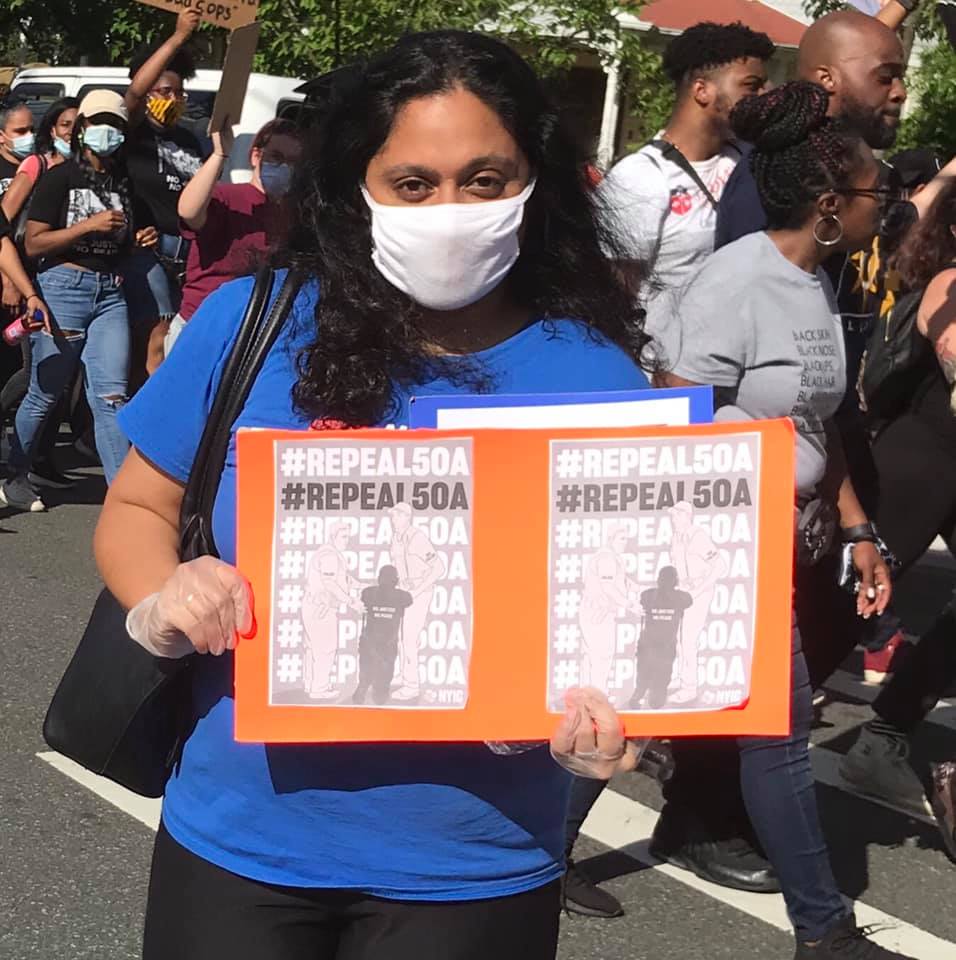
[dropcap]R[/dropcap]ahul Dubey, a healthcare innovator who lives in Washington DC, became an overnight hero when he opened up his home to over-70 plus protesters who were being pursued by police in riot gear with tear gas, pepper spray and rubber bullets. This peaceful crowd had been dispersed to make way for President Trump to pose with a Bible outside St. John’s Church in a photo opportunity.
“Absolute mayhem and horror broke out,” Dubey recalled later to reporters. “I heard a big bang, screaming, pepper spray started flying. My eyes were burning. I just started yelling ‘Get in the house!’ There was this sense of a human tsunami coming down the street and police beating people, putting faces down on cement.”
His action of welcoming these protesters was what saved them from injury and arrest, and he comforted and supported them through the night until the curfew ended in the wee hours of the morning. He maneuvered to feed them pizza through police lines and in his caring, saw them as friends and family.
Yet Dubey doesn’t want to take credit for opening his door to the protesters. He believes we have forgotten the definition of humanity and that’s why evil landed up on his doorstep. “I do believe 95% of the people that I know would open that door, The good has been set in motion – You will open the door now and you know that, and if you don’t, you need to check yourself.”
Since the incident, Dubey has been inundated with calls, letters and offers of help. He tells anyone who will listen, “We have the brain trust of desis and we have the capital that we’re sitting on, and we have inner city problems. Let’s find their teams, and let’s lend out our star desi people. Let’s make it a two-way street. If there’s any subculture and any demographic that should be collaborating, it is ours.”
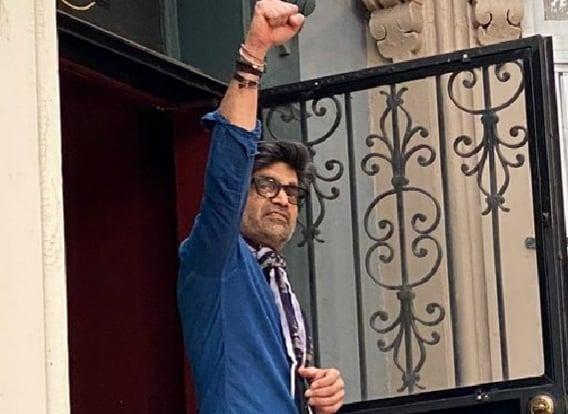
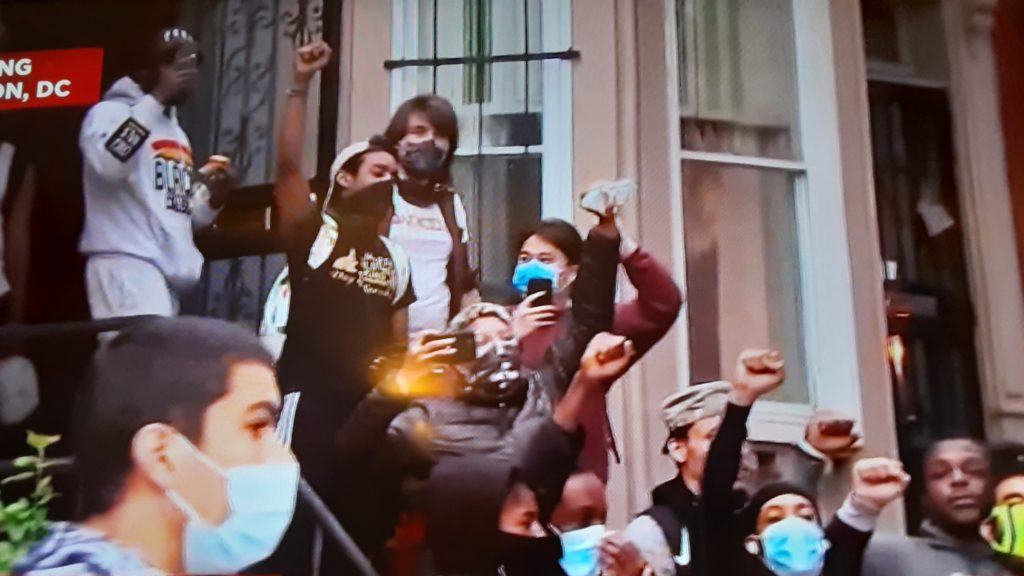
[dropcap]I[/dropcap]n the meantime, the mood has changed in Washington, D.C., where the mayor Muriel Bowser has had large yellow letters spelling out “Black Lives Matter” painted a stone’s throw away from the White House. The troops and curfews have been withdrawn. No one can miss this message, and for the protesters, it is a sign that there is change in the air.
Mayor de Blasio announced a series of new reforms to the New York City Police Department, shifting funding from the NYPD to youth and social services for communities of color, and established a community ambassadors program within the NYPD. States across America are reviewing their policies on police interaction and accountability.
Seeing all this play out on television, the highs and the lows, it seems a bit surreal. It’s hard to believe but it looks as if we are in the midst of a real live movement for change, of black, white and brown working together, a developing revolution which will hopefully transform lives and go down in the history books.
(A version of this article was first published in The Week, a leading news magazine in India)
